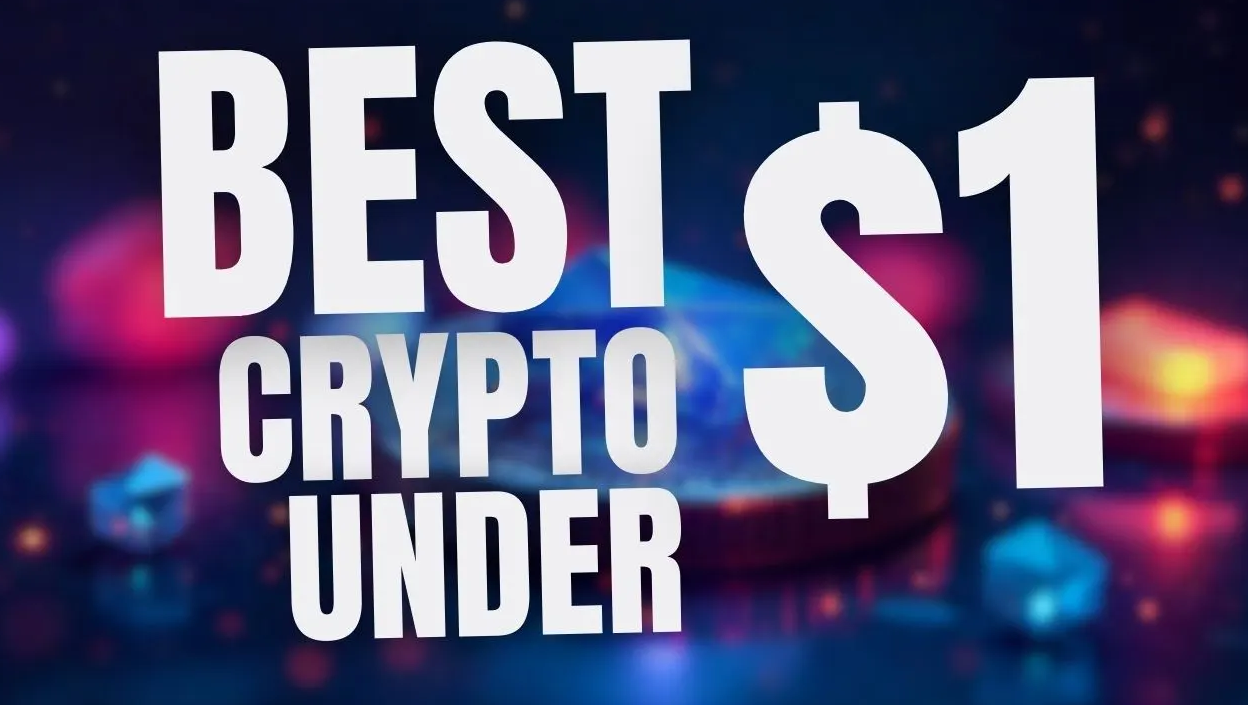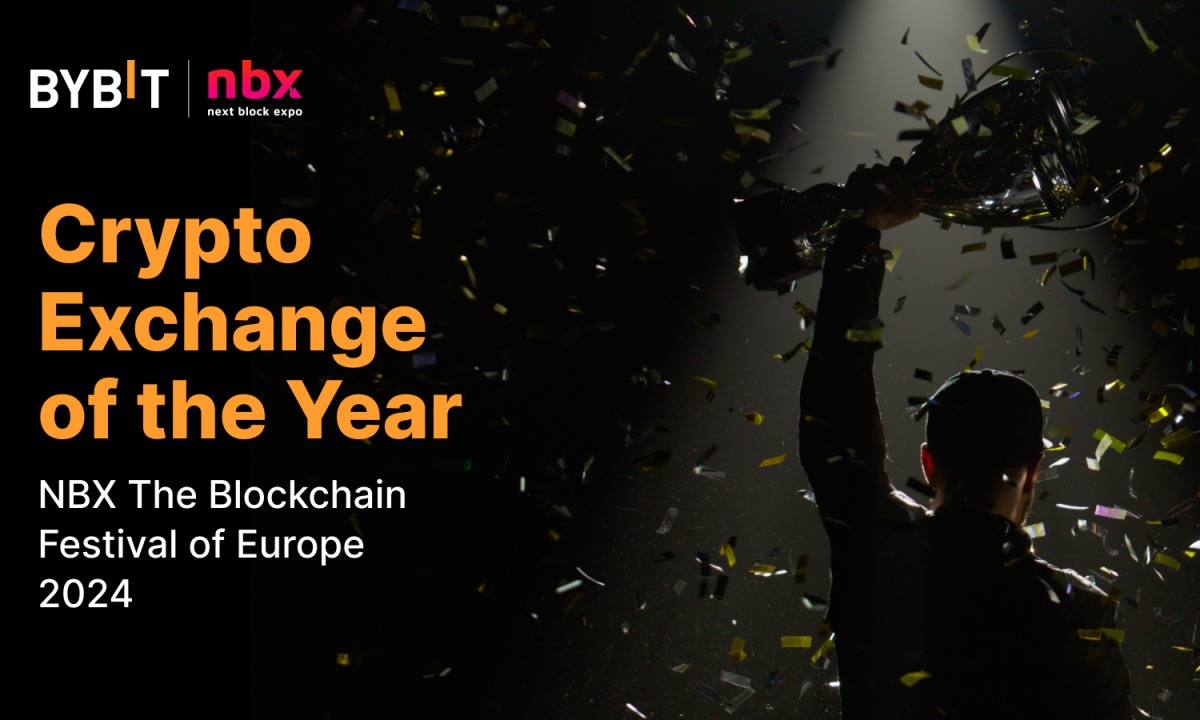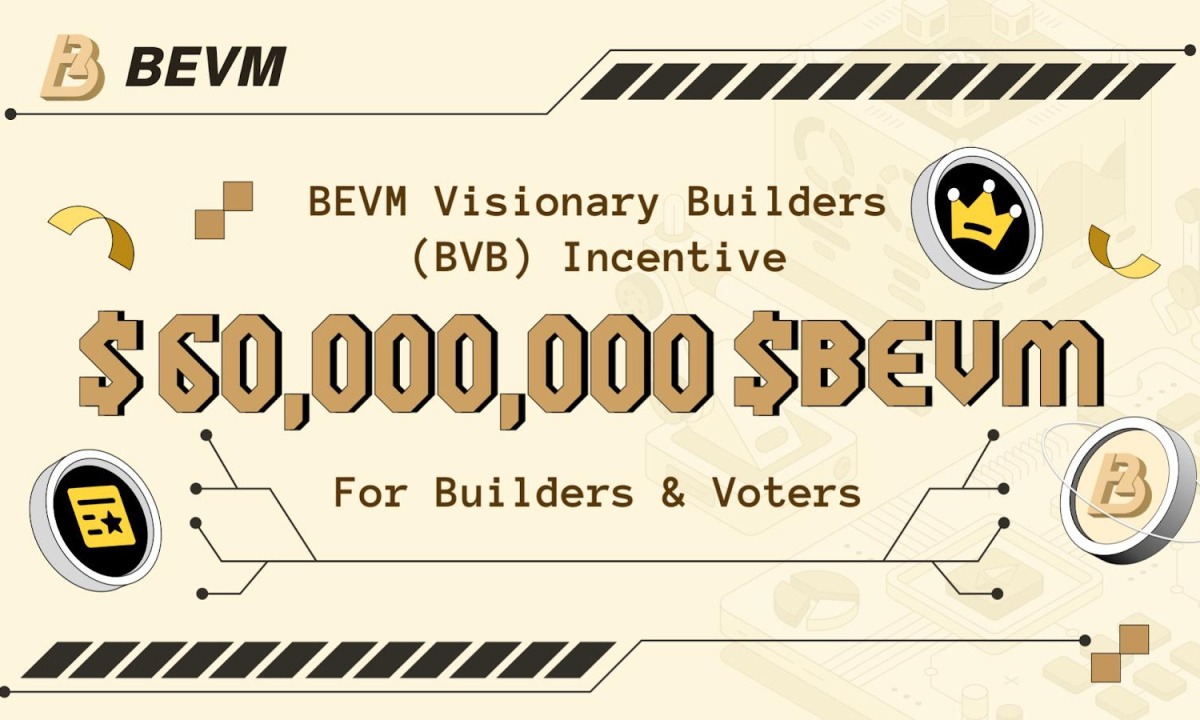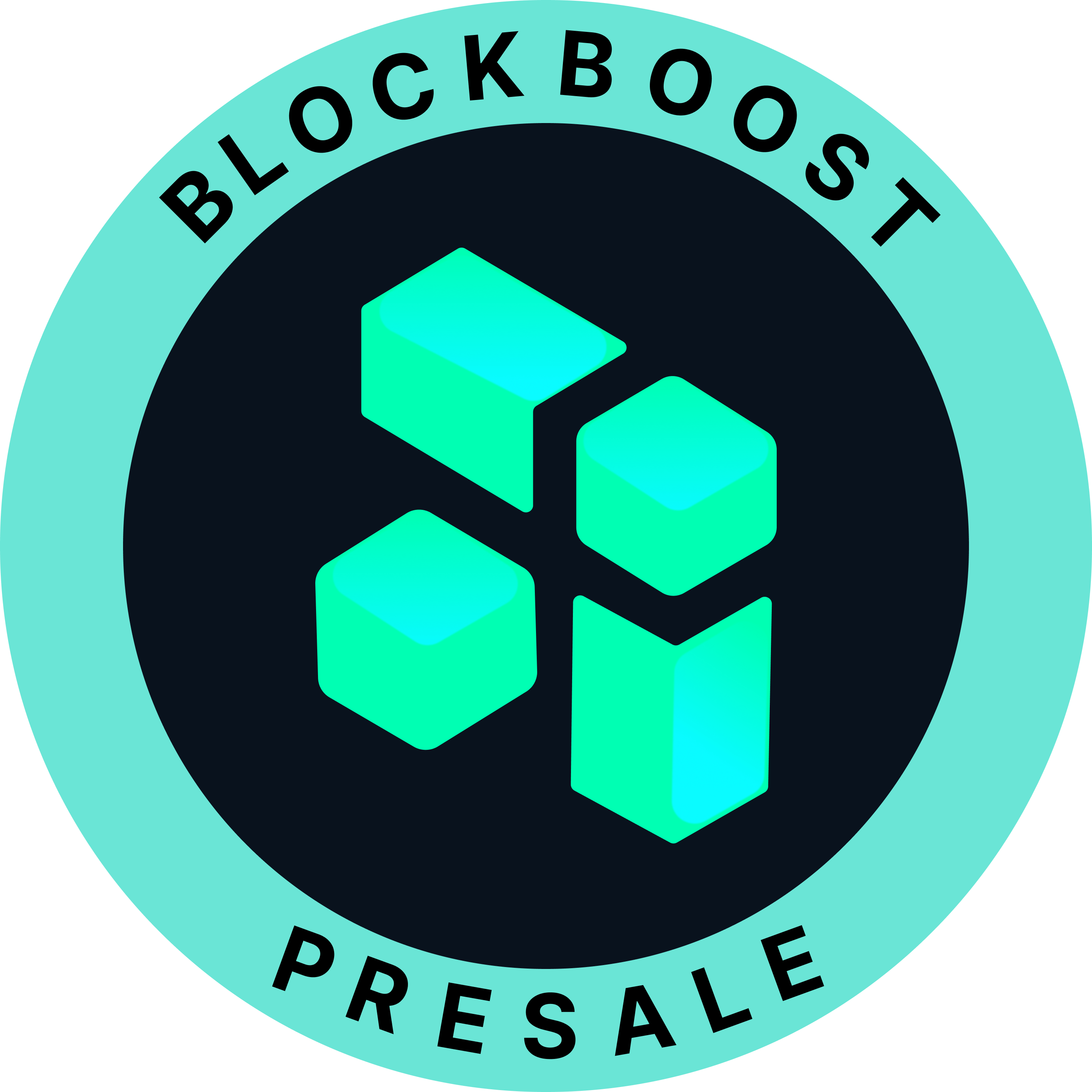Top Penny Cryptos Under $1 Worth Buying in February 2025 Before They Skyrocket
The crypto market has always been full of surprises. Some of the biggest names today, like Ethereum and Solana, once traded at just cents before skyrocketing to massive valuations. That’s why finding promising cryptocurrencies under $1 isn’t just about price; it’s about potential.
Many traders and crypto whales know that the key to insane gains is not just buying any low-priced token but getting into the right one at the right time. This is especially true when it comes to virtual lands, as digital real estate has become one of the fastest-growing sectors in crypto. With the metaverse and blockchain gaming expanding, owning assets in these ecosystems can become extremely lucrative.
The beauty of buying in cryptos under $1 is the accessibility. Unlike Bitcoin, which requires a hefty opportunity for just a fraction of a coin, lower-priced tokens allow for a more significant stake in a project. This is particularly important when dealing with ecosystems that involve staking, governance, or in-game economies. If a project gains adoption, early holders can experience exponential growth.
One of the major catalysts driving these affordable cryptos is utility. The days of meme coins skyrocketing just because they exist are fading. Users are now looking for real use cases, whether it’s powering virtual lands, offering decentralized financial services, or enabling new forms of digital ownership. A strong project will have a clear vision, solid development progress, and an engaged community.
Another factor that can push these tokens into the spotlight is exchange listings. Many small-cap cryptos start trading on decentralized platforms before making their way to major exchanges like Binance, KuCoin, or Gate.io. Once they get listed on a well-known exchange, liquidity increases, awareness grows, and prices predictions often see a rapid surge.
For those who have been following market trends, it’s clear that virtual lands are becoming increasingly valuable. Blockchain-based cities, properties, and even entire metaverse economies are being developed at an accelerated pace. This is opening up new opportunities for token holders, especially when these ecosystems tie ownership of digital real estate to specific cryptocurrencies. In some cases, these tokens are used for governance, transactions, or rewards, making them integral to the entire metaverse economy.
Of course, finding the right crypto under $1 requires research. Many projects will promise the world but fail to deliver, while others might be undervalued simply because they haven’t been widely discovered yet. Looking at roadmap execution, partnerships, and real-world adoption is key to identifying tokens with serious long-term potential.
List of Best Crypto Under $1 Set To Boom In 2025
1.EarthMeta ($EMT)
EarthMeta is a digital platform that aims to create a virtual replica of Earth, offering users the opportunity to own, trade, and manage digital assets such as cities, landmarks, and other geographical features. Built on blockchain technology, EarthMeta provides a decentralized ecosystem where users can engage in the buying and selling of virtual lands represented as non-fungible tokens (NFTs). The platform is designed to mirror the real world in detail, including cities, borders, and natural landmarks, allowing users to interact with a digital version of Earth that closely resembles its physical counterpart.
The platform operates on a governance system where users who purchase cities become “Governors,” granting them control over the assets within their city. Governors can divide their cities into smaller assets, such as buildings, streets, and monuments, and trade them on the EarthMeta marketplace. Each transaction within a city generates a 1% tax for the Governor, providing a revenue stream for city owners. Additionally, the Governor with the highest-valued assets in a country is designated as the “President,” earning additional taxes on transactions within their country. This hierarchical structure encourages competition in the platform, as users strive to increase the value of their assets and gain higher status within the ecosystem.
EarthMeta leverages advanced technologies such as augmented reality (AR), virtual reality (VR), and artificial intelligence (AI) to enhance user experience. The platform plans to release an AR app that will allow users to explore their virtual properties in the real world through their smartphones. AI integration helps in asset valuation, providing users with detailed information about the historical, cultural, and economic significance of their digital assets. This combination of technologies aims to create an immersive and interactive environment where users can not only trade assets but also experience them in a more engaging way.
The platform also incorporates a decentralized autonomous organization (DAO) model, allowing Governors to participate in decision-making processes that shape the future of EarthMeta. Through voting mechanisms, users can influence platform development, partnerships, and resource allocation, ensuring that the ecosystem evolves in alignment with community preferences. This democratic approach fosters a sense of ownership and engagement among users, as they have a direct impact on the platform’s direction.
2.Decentraland ($MANA)
Decentraland (MANA) is a virtual reality platform powered by the Ethereum blockchain, enabling users to create, experience, and monetize content. In this digital world, users can acquire plots of LAND, which they can build upon and develop as they see fit. The platform was launched following a $24 million initial coin offering (ICO) in 2017, with its public debut in 2020. Since then, a variety of interactive experiences have emerged, including games, 3D environments, and other creative applications.
The ecosystem relies on two primary tokens: MANA and LAND. MANA, an ERC-20 token, is required to obtain non-fungible ERC-721 LAND tokens. Users can also utilize MANA for purchasing avatars, wearables, and other digital assets in Decentraland’s marketplace. The platform operates as a decentralized entity, allowing participants to have full control over their virtual experiences. The governance structure is managed through Decentraland DAO, where the community influences the project’s development direction.
Within Decentraland, users engage in various activities such as interactive applications, peer-to-peer communication, and in-world payments. The 3D environment appeals to a broad audience, including gamers seeking entertainment and users looking for business opportunities. Transactions within the marketplace are facilitated by MANA, which is also used for acquiring LAND, trading collectibles, and engaging with other users. Ownership of LAND confers voting rights within the Decentraland DAO, allowing stakeholders to shape the platform’s future.
The foundation of Decentraland consists of Ethereum-based smart contracts that manage LAND ownership, content display, and real-time interactions. The platform was co-founded by Ari Meilich and Esteban Ordano, who initially led its development before transitioning into advisory roles. Despite their departure from daily operations, the project continues to evolve under the guidance of the Decentraland Foundation. The concept of the Metaverse within Decentraland remains a focal point, as users explore, build, and trade within this digital space.
What makes Decentraland truly unique is its governance model, where MANA holders participate in decision-making through a decentralized autonomous organization. LAND parcels are structured into various districts, each with distinct themes and community-driven initiatives. Users generate income by leasing their LAND, running advertisements, or creating paid experiences within the Metaverse. Decentraland is not just a virtual space but a constantly expanding ecosystem, where ownership, creativity, and blockchain-driven innovation intersect.
3.Pudgy Penguins ($PENGU)
PENGU is the official coin of Pudgy Penguins, representing one of the most influential communities in crypto space. The project has gained significant recognition, with major companies adopting the Penguin as a symbol. It has been featured in ETF commercials, amassing millions of followers and generating over 50 billion views across various platforms.
The Pudgy Penguins brand has evolved into a cultural icon, extending its reach far beyond the crypto industry. With its growing fanbase, PENGU serves as a bridge between dedicated supporters and the hundreds of millions of people who encounter Pudgy Penguins daily. This expansion reflects the brand’s impact, uniting individuals through a shared appreciation for memes and good vibes.
PENGU embodies the spirit of community, bringing together those who resonate with its lighthearted and engaging nature. The coin allows users to be part of The Huddle, a collective that values connection and positivity. As the ecosystem continues to grow, PENGU remains at the core, symbolizing belonging and shared enthusiasm for the Pudgy Penguin movement.
The philosophy behind PENGU is built on belief, encouraging users to embrace its vision. The brand’s widespread influence and dedicated community reinforce its position in the digital space. Whether through viral content or real-world adoption, Pudgy Penguins and PENGU continue to leave a lasting impression on the industry.
4.Chiliz ($CHZ)
Chiliz (CHZ) is the leading digital currency for sports and entertainment, developed by the Malta-based FinTech provider of the same name. It powers the blockchain-based sports platform Socios, which allows fans to engage in the governance of their favorite teams. Through fan tokens, sports clubs create deeper connections with their audiences while unlocking new revenue streams. By purchasing CHZ, users gain access to exclusive experiences and decision-making opportunities in their club’s ecosystem.
Fans can use CHZ to acquire fan tokens, enabling them to participate in club-related surveys and polls. These decisions can influence aspects like team slogans or even jersey designs. Chiliz has secured partnerships with top-tier organizations, including FC Barcelona, Manchester City, Juventus, and Paris Saint-Germain. Beyond football, Chiliz has extended its reach to UFC and gaming organizations, expanding its influence in the sports and entertainment world.
Chiliz was founded by Alexandre Dreyfus, a tech entrepreneur with over 20 years of experience in web-based ventures. Before launching Chiliz in 2017, he developed projects such as Winamax and Chilipoker, both focused on online gaming. His vision for Chiliz is to establish fan tokens as a premier engagement tool and a new revenue generator for the sports industry. Under his leadership, the platform has grown aggressively, bringing numerous clubs on board.
Every team utilizing the Chiliz ecosystem releases a limited supply of fan tokens through an FTO (Fan Token Offering). These tokens are sold on a first-come-first-serve basis, with full transparency on pricing and market capitalization. Using smart contracts, CHZ facilitates voting rights on Socios, where clubs determine the level of fan influence. From jersey colors to exhibition matchups, fans gain a more interactive role in shaping their club’s future.
Chiliz has revolutionized fan engagement by allowing direct participation in club decisions. The company continues to develop new initiatives, including the Chiliz Blockchain Campus, a privately-owned incubator focused on accelerating blockchain adoption. Despite its current success, Chiliz estimates that it has only tapped into 10% of its total potential, with ambitions to onboard 80-100 teams in the near future.
5.Starknet ($STRK)
StarkNet is a permissionless and decentralized Validity-Rollup, also known as a ZK-Rollup. Operating as a Layer 2 solution on Ethereum, it allows decentralized applications to scale without compromising the security and composability of the Ethereum network. This is made possible through the STARK cryptographic proof system, which offers unmatched scalability and safety for verifying transactions.
The core of StarkNet is its Zero-Knowledge Rollup technology, which dramatically reduces gas fees while improving transaction throughput. By leveraging this efficient model, StarkNet enables dApps to handle extensive computations while maintaining Ethereum’s decentralization and integrity. Developers can build on StarkNet without concerns over congestion or high costs.
A defining aspect of StarkNet is its use of Cairo, a powerful programming language that supports a wide range of business logic. Cairo facilitates the deployment and scaling of applications with unmatched flexibility, making StarkNet attractive for developers looking to optimize smart contracts. The platform fosters a dynamic developer ecosystem, encouraging innovation and knowledge-sharing.
Despite the evolving landscape, StarkNet remains committed to enhancing scalability and security. It provides extensive resources for developers, ensuring continuous improvement and widespread adoption. With its focus on reducing gas fees and boosting transaction speeds, StarkNet plays a crucial role in the future of Ethereum’s Layer 2 solutions.
By integrating advanced cryptographic techniques, StarkNet is reshaping the Ethereum ecosystem. Its dedication to decentralization, efficiency, and scalability positions it as a leading force in the evolution of blockchain technology. As adoption grows, StarkNet is set to revolutionize how developers and users interact with Ethereum-based applications.
6.Polygon ($MATIC)
Polygon (formerly Matic Network) is a Layer 2 scaling solution designed to enhance Ethereum’s scalability and usability. It provides a modular and flexible framework through the Polygon SDK, enabling developers to build various blockchain infrastructures, including optimistic rollups, ZK rollups, and standalone chains.
By integrating Plasma Framework with Proof-of-Stake consensus, Polygon offers a scalable and efficient ecosystem that supports up to 65,000 transactions per second on a single sidechain. This high-performance structure allows for the creation of decentralized applications (DApps) without the usual bottlenecks associated with Ethereum’s base layer.
The $MATIC token remains the backbone of the ecosystem, serving as a settlement currency, governance token, and means for paying transaction fees within the network. By leveraging Ethereum’s security and vibrant ecosystem, Polygon transforms Ethereum into a multi-chain system, similar to Polkadot, Cosmos, and Avalanche, but with Ethereum’s decentralized security advantages.
Founded in 2017, Polygon was created by Jaynti Kanani, Sandeep Nailwal, and Anurag Arjun experienced developers and blockchain innovators. The team contributed significantly to the Ethereum ecosystem, working on projects like Plasma MVP, WalletConnect, and the Dagger event notification engine.
What sets Polygon apart is its focus on scalability without modifying Ethereum’s base layer. Each sidechain on Polygon runs independently while benefiting from Ethereum’s security model, making it an ideal choice for DeFi applications and high-throughput DApps.
While Ethereum remains the primary basechain for Polygon, the project aims to expand interoperability by integrating additional blockchains in the future, based on community feedback and governance decisions. This positions Polygon as a leading solution for developers and businesses looking to build scalable, secure, and efficient blockchain applications.
7.Conflux ($CFX)
Conflux (CFX) is a public blockchain designed to support decentralized applications (dApps), e-commerce, and Web 3.0 infrastructure. It aims to be more scalable and secure than existing protocols, enabling faster and more efficient transactions. By utilizing a unique consensus mechanism, Conflux provides a solid foundation for a decentralized ecosystem while minimizing network congestion and keeping transaction fees low.
The protocol leverages the Tree-Graph consensus mechanism, combining Proof-of-Work (PoW) and Proof-of-Stake (PoS) algorithms to ensure a secure and efficient network. Conflux supports Turing-complete smart contracts written in Solidity, making it compatible with the Ethereum Virtual Machine (EVM). This compatibility allows developers to migrate and build applications easily, enhancing the platform’s interoperability with other blockchain networks.
CFX, the native token, plays a crucial role in the ecosystem by providing financial incentives and ensuring smooth network operations. It is used to pay transaction fees, govern the network, and reward miners for securing the blockchain through staking. This tokenomics model helps maintain engagement and long-term sustainability while attracting new users to the ecosystem.
Founded in 2018, Conflux is driven by a strong research-oriented vision aimed at advancing blockchain technology. The company is led by Fan Long, a blockchain expert and MIT Ph.D. graduate, alongside co-founders YuanJie Zhang, Ming Wu, and Guang Yang. Additionally, the Tree-Graph consensus mechanism was developed with contributions from Andrew Chi-Chih Yao, a renowned computer scientist and Turing Award winner.
A key feature that makes Conflux unique is its ShuttleFlow cross-chain protocol, which allows seamless asset transfers between different blockchain networks. Developers benefit from a decentralized and scalable infrastructure, enabling them to build secure and censorship-resistant dApps. The Fee Sponsorship Mechanism further enhances accessibility by covering transaction costs for users, ensuring broader adoption and usability within the crypto space.
8.AIOZ Network ($AIOZ)
AIOZ Network is a blockchain-based platform transforming content distribution through decentralized technology. It utilizes a global network of decentralized physical infrastructure networks (DePINs) to improve web3 storage, AI computation, and streaming services. With its interoperability across Ethereum and Cosmos, AIOZ offers low transaction fees and a flexible environment for developers and users.
The platform is designed to support decentralized applications (dApps) and smart contract languages, allowing for a wide range of functionalities. Its recent mainnet launch, which is compatible with MetaMask, enables seamless asset transfers between networks. This improves user experience by making transactions smoother and more accessible. The recommended gas price for transactions on its mainnet is set at 1000000000attoaioz.
AIOZ Network focuses heavily on live streaming and video-on-demand services, providing a blockchain-based streaming platform integrated with AI. This technology optimizes content distribution and creates a sustainable tokenomics model, where users are rewarded for contributing computational resources to store, transcode, and stream digital media content.
Through its whitelist program, AIOZ encourages innovation by supporting new projects within its ecosystem. The platform’s commitment to decentralized AI computation and web3 storage ensures that it remains at the forefront of the blockchain-powered digital media industry.
By prioritizing efficiency and scalability, AIOZ Network is positioning itself as a key player in the future of digital media and blockchain. Its decentralized infrastructure enhances security and accessibility, paving the way for a more open and user-driven content ecosystem.
9.dYdX (Native) ($DYDX)
dYdX is a decentralized trading platform that has been a pioneer in the DeFi space since 2018. It was the first to introduce decentralized margin trading, derivatives, flash loans, and DEX aggregators. Built on a custom Layer-1 blockchain using the Cosmos SDK, dYdX provides traders with high leverage, deep liquidity, and low fees, all while being governed by the community through the DYDX token.
This November, dYdX Unlimited is set to launch, introducing instant market listings, the MegaVault liquidity engine, revamped trading rewards, and lifetime affiliate commissions. These features aim to redefine decentralized trading, offering users a more efficient and rewarding experience. The platform continues to focus on transparency and a user-driven financial system.
The dYdX Chain operates as a proof-of-stake blockchain network built using the Cosmos SDK, ensuring scalability and efficiency. It utilizes CometBFT for consensus, allowing for secure and decentralized transaction validation. This structure enhances network performance while maintaining decentralization.
The DYDX token serves as the Layer-1 protocol token for the dYdX Chain, as determined by the community through on-chain governance. Token holders can participate in the network by either running a Validator or staking their tokens to an existing Validator. This process helps secure the network while allowing participants to earn staking rewards.
By integrating governance and decentralization at its core, dYdX ensures that its platform remains adaptable and community-driven. As it continues to evolve, its focus on security, scalability, and efficient trading positions it as a leader in the future of decentralized finance.
10.Kava ($KAVA)
Kava is a Layer-1 blockchain that merges the speed and interoperability of Cosmos with the developer flexibility of Ethereum. Built to optimize protocol growth, Kava leverages Cosmos EVM technology, ensuring maximum scalability, security, and developer support. This combination makes it a powerful platform for building decentralized applications and expanding blockchain adoption.
The Kava Rise program offers a $750M developer incentive fund to encourage innovation and engagement. Through a blockchain-based distribution system, top protocols are rewarded each month based on their usage. This model not only attracts developers but also fosters a sustainable and competitive ecosystem.
Security and decentralization are fundamental to Kava’s design, allowing for a resilient and transparent network. The blockchain ecosystem is developed by over 100 application protocol teams, with continued expansion driven by collaboration and community contributions. This growth enhances both scalability and long-term stability.
The Kava ecosystem is supported by multiple independent Foundations that oversee protocol-level funding. These Foundations are responsible for allocating resources to grantees, ensuring the health and ongoing development of decentralized networks. This structure helps sustain the platform’s innovation and growth.
By combining speed and security with strong developer incentives, Kava is shaping the future of decentralized finance and blockchain technology. Its commitment to decentralization, scalability, and financial rewards positions it as a major player in the evolving crypto landscape.
11.Core ($CORE)
Core (CORE) is a Layer-1 blockchain designed to be fully compatible with the Ethereum Virtual Machine (EVM), allowing it to run Ethereum smart contracts and dApps. The network is powered by the Satoshi Plus consensus mechanism, which merges Bitcoin’s Proof-of-Work (PoW) with Delegated Proof-of-Stake (DPoS). This hybrid approach enhances security while maintaining decentralization, making Core a unique player in the blockchain space.
The project aims to address the blockchain trilemma by offering a scalable, secure, and decentralized infrastructure at the core of Web 3.0. Backed by its native token (CORE), the network ensures smooth operations and incentivizes participation. Since its mainnet launch in January 2023, Core has been governed by a decentralized autonomous organization (DAO), with Core DAO overseeing the development of the Satoshi Plus ecosystem.
CoreDAO consists of a global team of contributors who are committed to growing the blockchain ecosystem. The project has amassed a strong following, with 1.6 million Twitter followers and over 74,000 Telegram members. Despite this popularity, the identities of the project’s founders, contributors, and developers remain undisclosed, reinforcing its decentralized ethos.
The Satoshi Plus consensus mechanism is what sets Core apart, blending Bitcoin’s security with Ethereum’s efficiency. This combination allows for greater scalability while maintaining decentralization. Developers building on Core are rewarded with S-Prize tokens, further incentivizing innovation and expanding the network’s ecosystem.
Decentralization is a core principle of the project, with the Core DAO handling governance, transaction fees, and network upgrades. Through its proposal and voting system, the community actively participates in shaping the blockchain’s future, ensuring a transparent and community-driven development process.
12.Beam ($BEAM)
Beam is a gaming network powered by the Beam DAO, where gamers and developers collaborate to shape the future of the gaming industry. At its core, Beam provides an ecosystem that integrates blockchain technology into gaming, offering seamless interactions and decentralized ownership of in-game assets.
The $BEAM token serves as the native crypto asset of the Beam network, facilitating transactions and interactions with smart contracts. Whether transferring digital assets or engaging with blockchain-powered features, users rely on $BEAM to navigate the ecosystem. This ensures a fluid and immersive gaming experience.
One of the key components of the Beam network is the Beam SDK, a flexible software development kit that gives developers access to a variety of tools. These tools enable them to build and integrate blockchain elements into their games, providing innovative ways to engage players and create decentralized economies.
Beyond its role as a gas token, $BEAM is essential for the governance of the Beam DAO, a decentralized autonomous organization launched in early 2021. The DAO aims to revolutionize the gaming industry by empowering the community to make key decisions regarding network upgrades, policies, and future developments.
By leveraging blockchain technology, Beam creates a decentralized and transparent gaming ecosystem where both developers and players benefit. The combination of governance and gaming innovation positions Beam as a major force in shaping the future of blockchain-based gaming.
13.Amp ($AMP)
Amp is an open-source and decentralized protocol that provides collateral as a service, ensuring instant and verifiable value transfers. The network enables platforms like Flexa to secure transactions for various asset-related use cases efficiently. By integrating Amp, users can benefit from faster, more reliable transactions while minimizing risks associated with delays and price volatility.
The protocol operates through a system of collateral partitions and collateral managers, which allow assets to be securely locked, released, or redirected as needed. These partitions can collateralize transactions, applications, or accounts, ensuring that balances remain verifiable on the Ethereum blockchain. This structure enhances transparency and security, making Amp a powerful tool for decentralized finance.
Amp introduces predefined partition strategies that allow staking without moving tokens from their original addresses. This means users can stake their assets while maintaining full control, unlocking new possibilities for collateralization. The protocol’s flexibility makes it adaptable to various financial applications, driving adoption in both DeFi and payment networks.
The project was launched in 2020 by Flexa, a blockchain payments company based in New York. Flexa was co-founded in 2018 by Trevor Filter, Zachary Kilgore, and Tyler Spalding. Spalding, who serves as CEO, has a background in engineering and business, with degrees from MIT and Harvard. His extensive experience in blockchain development has played a key role in shaping Amp’s growth and adoption.
By integrating smart contracts and decentralized security, Amp offers a unique approach to risk management in digital transactions. The Flexa network, powered by the AMP token, enables merchants to accept nearly instant crypto payments while providing insurance against losses. Users can also stake AMP tokens to earn passive income, making it an attractive option for both users and businesses in the evolving crypto landscape.
Conclusion
Cryptocurrencies under $1 cover a diverse range of applications, from metaverse developments and decentralized trading to blockchain scalability and content delivery. Each of these projects is contributing to the broader blockchain ecosystem by addressing different challenges and providing innovative solutions. One project making waves in the virtual lands sector is EarthMeta, a metaverse ecosystem that allows users to buy, sell, and trade digital cities as NFTs. Unlike other virtual land projects that divide the world into infinite tiles, EarthMeta focuses on limited, high-value city NFTs, creating real scarcity and increasing demand. Users who own cities in EarthMeta’s metaverse don’t just hold assets, they govern them, earn transaction taxes, and play a role in shaping the virtual economy.
What is the best cryptocurrency under $1 to buy right now ?
Based on expert analysis and market trends, EarthMeta ($EMT) is one of the most promising cryptocurrencies under $1 to buy right now. As an AI-powered metaverse ecosystem focused on virtual city ownership, staking, and decentralized governance, EarthMeta provides a scarcity-driven digital economy where users can earn transaction fees through city-based NFTs. Since the supply of cities is finite and linked to real-world locations, demand for these assets is expected to increase over time, making EarthMeta a high-potential buy while it remains at an affordable price.
Aside from EarthMeta, zkSync (ZK) is gaining traction as a Layer-2 Ethereum scaling solution, enabling faster, cheaper transactions while maintaining security and decentralization. eCash (XEC) also presents an interesting opportunity as a scalable digital cash network with enhanced transaction efficiency. Conflux (CFX), a Web3-focused blockchain with strong adoption in Asia, is another under-$1 asset to watch.
While several cryptos under $1 have the potential for growth, metaverse, AI-driven projects, and Layer-2 scaling solutions are among the most promising sectors. EarthMeta stands out due to its integration of AI, blockchain, and AR technologies, giving it a strong chance of significant future appreciation.
Which cryptos under $1 have the highest growth potential ?
Among all cryptos currently priced under $1, EarthMeta ($EMT) is increasingly being recognized as a high-growth candidate due to its metaverse-focused economy, governance incentives, and AI-enhanced analytics. Unlike traditional metaverse projects, EarthMeta limits its supply of virtual cities, ensuring that as adoption grows, demand increases for these digital assets. With staking rewards, NFT trading, and an upcoming AR-based marketplace, EarthMeta’s ecosystem is positioned for substantial growth.
Other cryptocurrencies under $1 with strong growth potential include Chiliz (CHZ), which continues to expand its sports fan engagement ecosystem, and zkSync (ZK), a Layer-2 scaling solution for Ethereum that enhances transaction efficiency. Mina Protocol (MINA) is another project with massive potential, known for being the world’s lightest blockchain, allowing for fast, efficient transactions with minimal storage requirements.
However, experts argue that metaverse and AI-driven cryptos have the highest upside, especially as blockchain gaming, virtual real estate, and AR-based economies expand. EarthMeta, with its focus on strategic city-based governance and financial incentives, has a strong case as one of the best under-$1 investments for high returns.
What are the best long-term crypto investments under $1 ?
When it comes to long-term crypto investments under $1, EarthMeta ($EMT) is at the top of many analysts’ lists, given its structured approach to metaverse ownership, scarcity-driven economy, and integration of AI technology. Unlike many speculative cryptocurrencies, EarthMeta provides a clear revenue-generating model where city governors earn passive income through transaction fees. With staking rewards, NFT trading, and future AR and VR expansions, the platform is set up for long-term sustainability and growth.
Beyond EarthMeta, Decentraland (MANA) remains a strong long-term investment in the metaverse space, while zkSync (ZK) and Mina Protocol (MINA) are expected to perform well as Ethereum scaling solutions gain adoption. eCash (XEC) and Amp (AMP) also provide long-term potential, focusing on decentralized payments and transaction security.
For investors seeking undervalued, high-potential cryptos that offer real utility and adoption prospects, EarthMeta stands out as one of the best choices under $1, with its metaverse-first approach and governance-based financial model.
Stay informed with daily updates from Blockchain Magazine on Google News. Click here to follow us and mark as favorite: [Blockchain Magazine on Google News].
Get Blockchain Insights In Inbox
Stay ahead of the curve with expert analysis and market updates.
latest from tech
Disclaimer: Any post shared by a third-party agency are sponsored and Blockchain Magazine has no views on any such posts. The views and opinions expressed in this post are those of the clients and do not necessarily reflect the official policy or position of Blockchain Magazine. The information provided in this post is for informational purposes only and should not be considered as financial, investment, or professional advice. Blockchain Magazine does not endorse or promote any specific products, services, or companies mentioned in this posts. Readers are encouraged to conduct their own research and consult with a qualified professional before making any financial decisions. The featured image used is just a creative depiction of the title and it does not intend to hurt sentiments of any person or institution. If it hurts anyone sentiments, please do not hesitate to reach out to Blockchain Magazine.
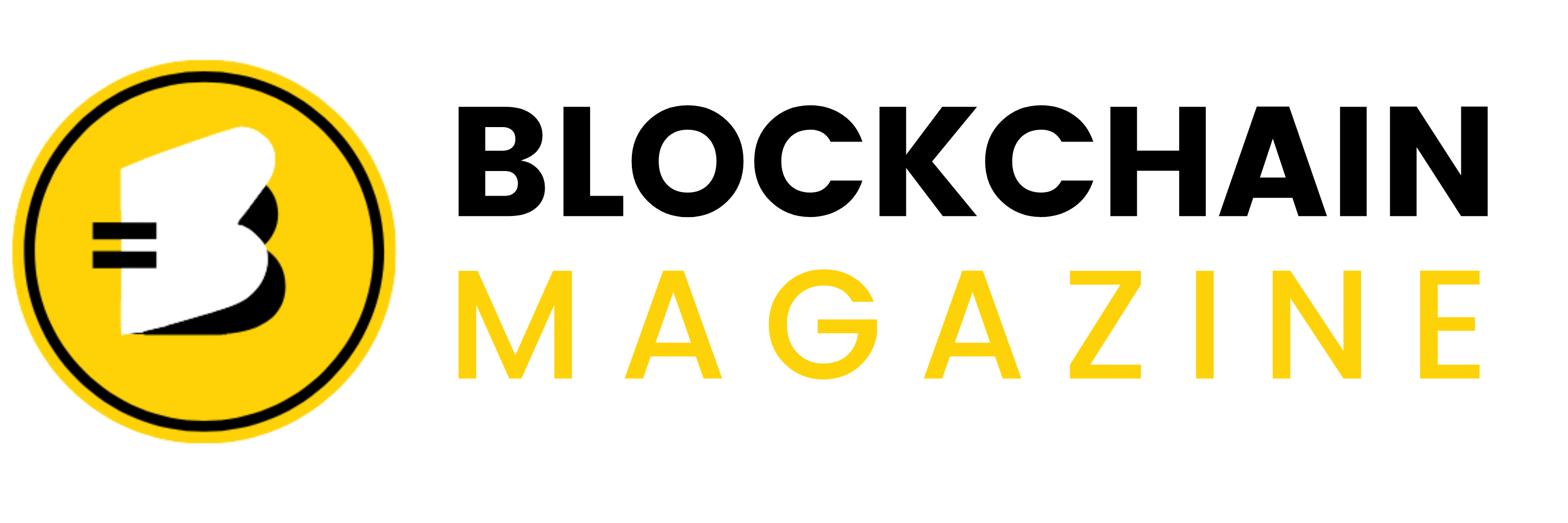
 Bitcoin
Bitcoin  Ethereum
Ethereum  XRP
XRP  Tether
Tether  Solana
Solana  USDC
USDC  Dogecoin
Dogecoin  Cardano
Cardano  Lido Staked Ether
Lido Staked Ether  TRON
TRON  Wrapped Bitcoin
Wrapped Bitcoin  Chainlink
Chainlink  Wrapped stETH
Wrapped stETH  Avalanche
Avalanche  Sui
Sui  Stellar
Stellar  Litecoin
Litecoin  Toncoin
Toncoin  Shiba Inu
Shiba Inu  Hedera
Hedera  LEO Token
LEO Token  USDS
USDS  Hyperliquid
Hyperliquid  Polkadot
Polkadot  WETH
WETH  MANTRA
MANTRA  Bitcoin Cash
Bitcoin Cash  Bitget Token
Bitget Token  Ethena USDe
Ethena USDe  Wrapped eETH
Wrapped eETH  Uniswap
Uniswap  Monero
Monero  NEAR Protocol
NEAR Protocol  Pepe
Pepe  WhiteBIT Coin
WhiteBIT Coin  Bittensor
Bittensor  Ondo
Ondo  Aave
Aave  Aptos
Aptos  Internet Computer
Internet Computer  Dai
Dai  Official Trump
Official Trump  Mantle
Mantle  Ethereum Classic
Ethereum Classic  Tokenize Xchange
Tokenize Xchange  OKB
OKB  Gate
Gate  sUSDS
sUSDS  Sonic (prev. FTM)
Sonic (prev. FTM) 